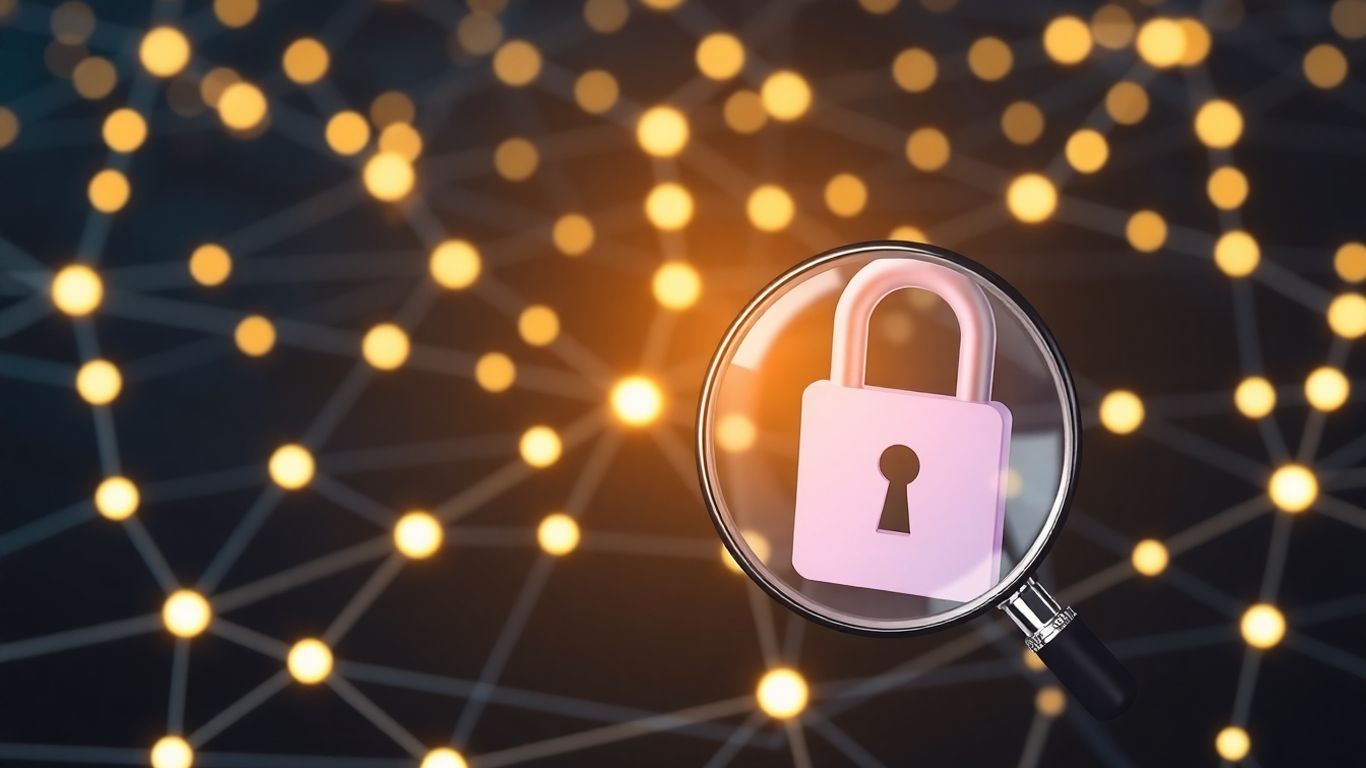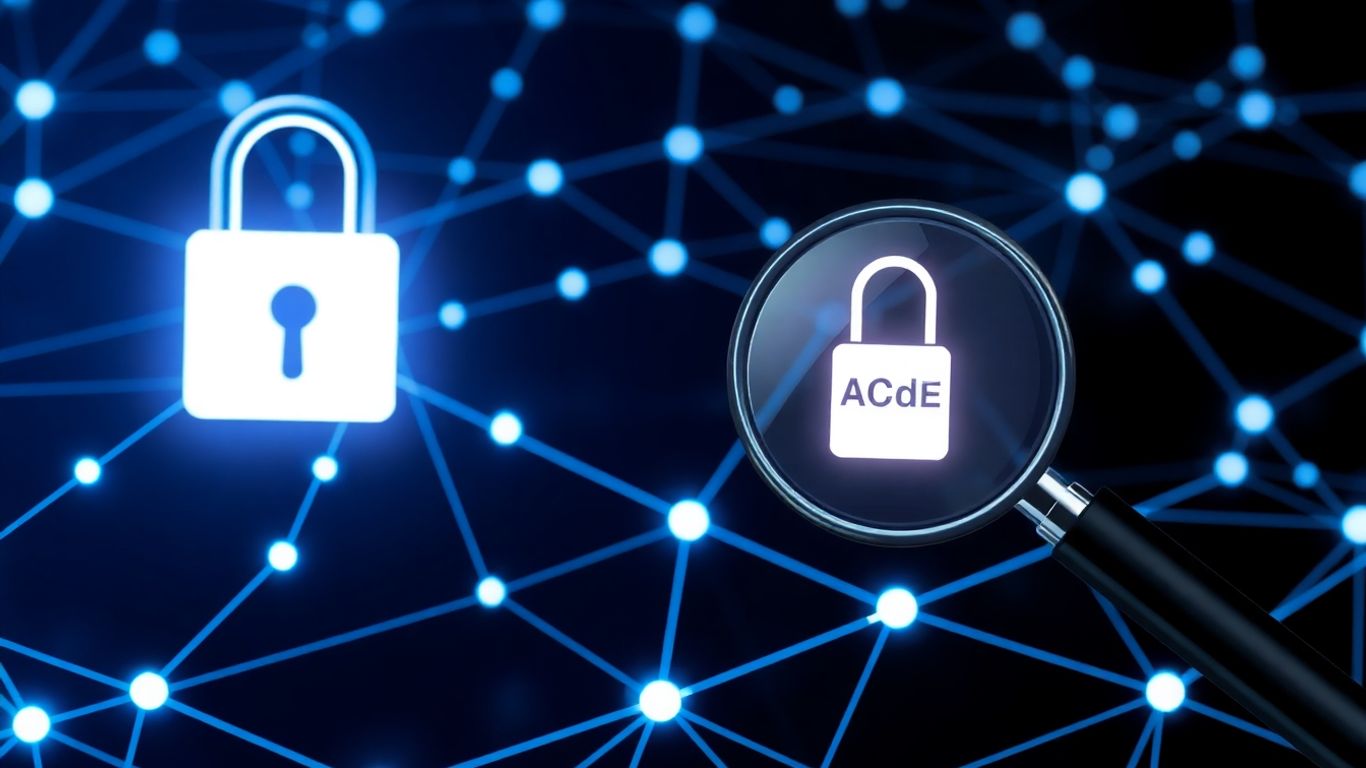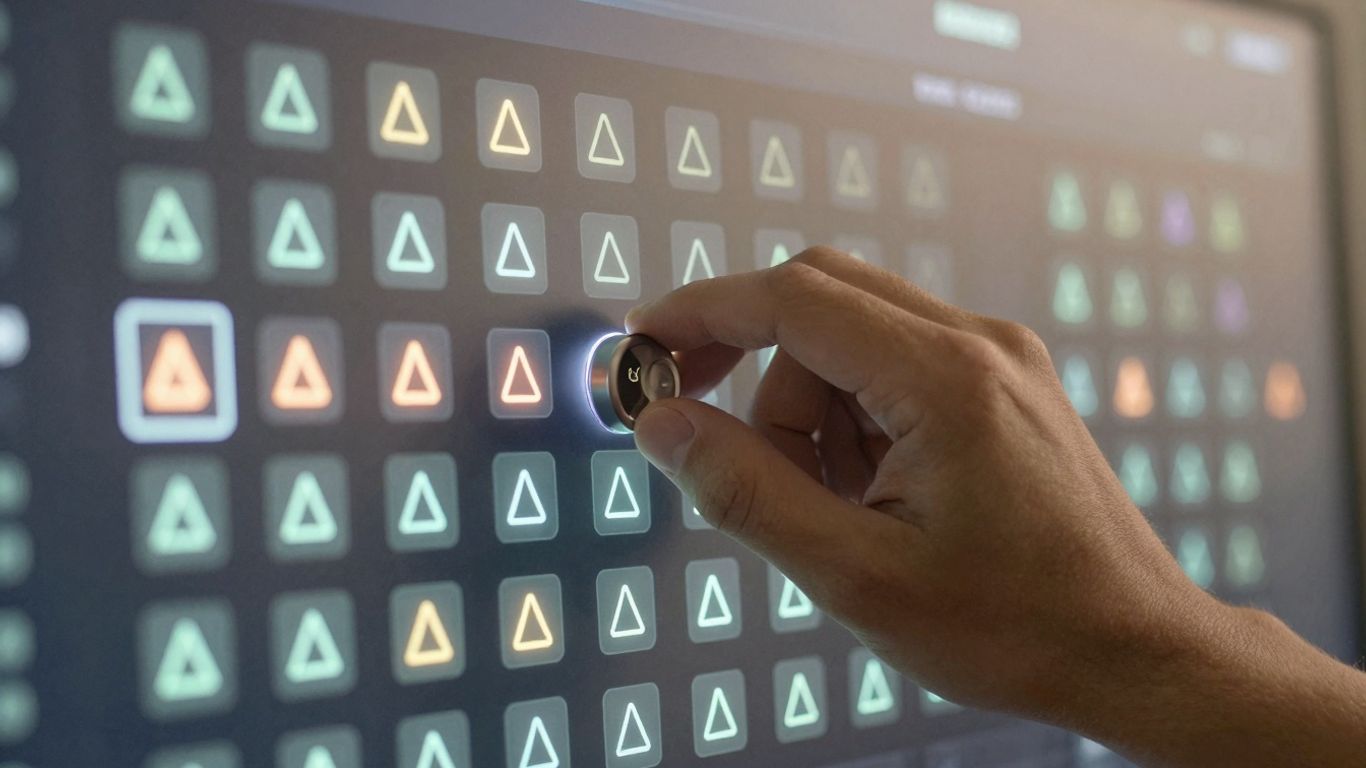[ newsletter ]
Stay ahead of Web3 threats—subscribe to our newsletter for the latest in blockchain security insights and updates.
Thank you! Your submission has been received!
Oops! Something went wrong. Please try again.
Learn what is a contract address in crypto, its importance for token verification, multi-chain interactions, and smart contract functionality. Stay safe online.





Ever feel lost in the crypto world? You're not alone. There's a lot of technical stuff out there, and one term that pops up a lot is 'contract address'. It sounds complicated, but it's actually pretty important for understanding how digital money and tokens work on the blockchain. Think of it like a unique ID for a specific program running on the network. This article breaks down what a contract address is, why it matters, and how to use them without getting into trouble. We'll cover everything from verifying tokens to avoiding scams, making your crypto journey a bit smoother.
Think of a contract address like a unique P.O. box for a specific program running on a blockchain. When developers create a smart contract – basically, a piece of code that lives on the blockchain and automatically executes when certain conditions are met – it gets its own address. This isn't an address for sending money to a person, but rather an address for interacting with that specific program. For tokens, like the ones you might buy or trade, this address is super important. It's how your wallet knows which specific token you're dealing with, distinguishing it from all the others out there. Without the correct contract address, you wouldn't be able to send, receive, or even see your tokens in your wallet.
When a smart contract is deployed onto a blockchain, it's assigned a unique identifier. This address is generated based on the deployer's address and the number of transactions they've made. When you want to interact with a smart contract – say, to swap one token for another on a decentralized exchange, or to add a new token to your digital wallet – you send a transaction to its specific contract address. The blockchain network then directs that transaction to the correct smart contract, and the code within it executes. It’s like sending a letter to a specific department within a large company; the address ensures it gets to the right place to be processed.
Here's a simplified look at how it works:
The idea of contract addresses really took off with the advent of smart contracts on platforms like Ethereum. Before this, most blockchain transactions were just simple transfers of value between two parties. But with smart contracts, you could have code that did more – it could manage a whole set of rules for a digital asset, like a token. The Ethereum network, starting around 2015, introduced standards like ERC-20, which defined how tokens should be built and managed using smart contracts. Each of these tokens, from major ones to smaller projects, gets its own contract address. This address becomes the permanent, public identifier for that specific token on that blockchain, allowing everyone to interact with it reliably.
The contract address is the digital fingerprint of a smart contract on the blockchain. It's a public record that allows anyone to verify its existence and interact with its functions. This transparency is a core feature of blockchain technology, enabling trust and predictability in digital asset management.
So, why should you even care about these contract addresses? It turns out they're pretty important for a few key reasons. Think of them as the official ID card for a token or a decentralized application on the blockchain. Without the right ID, you can't really interact with anything properly, and you might end up in a sticky situation.
This is a big one. In the crypto world, anyone can try to create a token. Some are legit, but many are just scams designed to trick you out of your money. A verified contract address is like a stamp of approval. It tells you that this token is the real deal, created by the actual project team, not some imposter. When you see a token address listed on official project websites or reputable crypto explorers, you can be more confident you're dealing with the genuine article. This helps you avoid adding fake tokens to your wallet or sending your hard-earned crypto to a scammer's address. It's all about making sure you're interacting with the correct smart contract, like the one for USDC.
Blockchains are no longer isolated islands. Many tokens and projects now exist on multiple networks – think Ethereum, Polygon, or Binance Smart Chain. Each of these networks has its own version of the token, and therefore, its own unique contract address. If you want to move your tokens between these chains, or use a decentralized application that works across different networks, you need to know the correct address for each specific chain. Sending tokens to the wrong address on the wrong chain is usually a one-way ticket to losing your funds. Getting these addresses right is key for smooth operations across the crypto landscape.
At their core, contract addresses are the gateways to smart contracts. These contracts are the automated programs that make a lot of crypto magic happen, from issuing new tokens to managing decentralized finance protocols. When you want to swap tokens on a decentralized exchange, stake your crypto, or participate in a decentralized autonomous organization (DAO), you're interacting with a smart contract. The contract address is how your wallet or application finds and communicates with that specific contract. It's the address that tells the blockchain, "Hey, execute these instructions with this particular program." Without it, the whole system wouldn't function.
The contract address is more than just a string of characters; it's the unique identifier that allows for secure and direct interaction with a specific piece of code on the blockchain. It's the address that confirms you're talking to the right program, not a fake one, and it's essential for everything from basic token transfers to complex decentralized applications.

Okay, so you've heard about contract addresses and how they're like the unique ID for digital assets on the blockchain. That's cool, but how do you actually use them without getting into trouble? It's a bit like knowing the right address to send mail to – get it wrong, and it's gone forever. In the crypto world, this means making sure you're dealing with the real deal and not some fake.
This is super important. Think of it as checking the return address on an envelope before you send it. You want to be sure it's legit. For any token or smart contract you want to interact with, you absolutely need to find its official contract address. Where do you find this? Usually, the project team will list it on their official website, their social media channels (like Twitter or Discord), or through official announcements. Don't just grab an address you see in a random forum or a YouTube comment – those are often traps.
Here's a quick rundown on how to check:
Scammers love contract addresses. They create fake tokens that look almost identical to popular ones, hoping you'll send your crypto to them by mistake. It's a common way people lose money. So, how do you spot these fakes?
The crypto space is full of innovation, but it also attracts people looking to take advantage of others. Always approach new tokens and contract addresses with a healthy dose of skepticism. If something feels off, it probably is.
Once you've found a verified contract address and you're confident it's legitimate, there are still some smart ways to interact with it. It’s all about being careful and informed.

Okay, so we've talked about what contract addresses are in general. Now, let's get a bit more specific and look at how they play out with actual tokens you might encounter. It's not just about knowing what an address is, but which address is the right one for the token you're dealing with.
Pi Coin is a bit of an interesting case. It started out as a project aiming for easy crypto mining right from your phone. But here's the thing: its main network has taken a while to get going, and the token has mostly lived inside its own app. Because of this, you won't find a widely recognized, official Pi Coin contract address on major public blockchains like Ethereum or BNB Smart Chain. This situation has unfortunately opened the door for a lot of fake Pi tokens to pop up. People create tokens on other chains that claim to be Pi Coin, but they have nothing to do with the actual Pi Network team. It's super important to be careful here. Always check Pi Network's official announcements before you try to interact with any smart contract that says it's Pi Coin.
The lack of a clear, official contract address on public blockchains for Pi Coin means users have to be extra vigilant. Scammers can easily create look-alike tokens to trick people into sending them money or valuable crypto.
USDC, or USD Coin, is a stablecoin. Think of it as a cryptocurrency designed to stay steady in value, usually pegged to the US dollar. It's super popular for trading and moving money around without the wild price swings you see with other cryptos. Because USDC is built using smart contracts, it has its own unique contract address on different blockchains. For example, on the Ethereum network, the official USDC contract address is 0xA0b86991c6218b36c1d19D4a2e9Eb0cE3606e48. This address is like the official home for USDC on that specific blockchain. It's where all the rules for minting new USDC, burning old ones, and transferring them are stored.
It's really important to use the correct USDC address. If you're adding USDC to your wallet or using it in a decentralized app (dApp), you need to make sure you're pointing to the real one. Since USDC exists on multiple blockchains (like Solana, Polygon, etc.), each chain has its own USDC contract address. Sending USDC to the wrong chain's address means your funds are likely gone for good.
So, how do you make sure you're dealing with the right contract address, especially for popular tokens like USDC or others you might find on exchanges?
Always double-checking the contract address before sending funds or interacting with a token is one of the simplest yet most effective ways to protect yourself from scams. It might seem like a small detail, but getting it wrong can lead to losing your crypto.
Having a verified contract address for a token or a decentralized application is a big deal in the crypto world. It's like having a verified badge on social media, but for your digital assets. It tells everyone that this is the real deal, not some copycat or scam.
This is probably the most important part for everyday users. When you know you're interacting with a verified contract address, you're much safer. Think about it: you want to add a token to your wallet or swap one token for another on a decentralized exchange. If you use the wrong address, you could end up sending your crypto to a scammer, or you might get a fake version of the token you thought you were buying. A verified address means you're dealing with the authentic token, and your funds are less likely to disappear into thin air.
Using a verified contract address is a fundamental step in protecting your digital assets. It's a simple check that can save you a lot of headaches and financial loss.
Verified contract addresses aren't just good for individual safety; they also make the whole crypto ecosystem more open. When a contract address is verified, it means the code behind it has been made public and often reviewed. This allows anyone to look at the contract's code on a blockchain explorer. You can see how many tokens are in circulation, where they're being sent, and how the contract functions. This openness is a core principle of blockchain technology. It means that instead of just taking a project's word for it, you can actually check things for yourself. This transparency helps build trust in the project and the wider crypto space.
Imagine trying to send money internationally, but every bank uses a different code for the same currency. It would be chaos, right? Verified contract addresses bring that much-needed consistency to the crypto world. Whether you're using a specific wallet, trading on an exchange, or interacting with a decentralized finance (DeFi) application, everyone agrees on what the official address for a particular token is. This means when you want to add USDC to your wallet, or when an exchange lists a new token, they all use the same, correct address. This consistency makes it easier for developers to build applications and for users to interact with different platforms without confusion. It simplifies the process of moving and managing your digital assets across the entire crypto landscape.
So, we've gone over what a contract address is and why it's a pretty big deal in the crypto world. It’s like the unique ID for a smart contract, helping us interact with tokens and making sure we’re dealing with the real deal and not some fake. For projects like Pi Coin, where things are still developing, understanding this is extra important. It means being patient, staying updated through official channels, and always, always double-checking before you click or send anything. Getting this right helps keep your digital assets safe and lets you explore the crypto space with more confidence. Keep learning, stay sharp, and happy (and safe) crypto adventures!
Think of a contract address like a unique digital mailbox for a special program on the blockchain called a smart contract. Just like you need an address to send mail, you need this contract address to send or receive specific digital tokens or interact with that program. It's a string of letters and numbers that points directly to where the smart contract lives on the blockchain.
When you want to make sure a token is the real deal and not a fake, you check its contract address. Official projects share their unique contract address. If you see that same address on a crypto exchange or in your wallet, you know you're dealing with the legitimate token, not a scammy copycat.
Blockchains are like different neighborhoods. A token might be available in multiple neighborhoods (like Ethereum or BNB Smart Chain). Each neighborhood has its own way of doing things, so the token needs a unique address in each one to work correctly there. Using the wrong address for the wrong neighborhood can mean your tokens get lost.
Pi Coin is a bit unique because it's been in a testing phase for a while. Many people are looking for its official contract address so they can trade or use it more easily. However, until it officially launches on a public blockchain, any address claiming to be for Pi Coin might be unofficial or even a scam. It's important to wait for official announcements from the Pi Network team.
The best way to avoid scams is to be super careful! Always find the official contract address from the project's official website or social media. Never trust random links or messages. Double-check the address before adding any token to your wallet or sending funds. If something sounds too good to be true, it probably is.
When a contract address is 'verified,' it means the code that makes the smart contract work has been checked and confirmed on a blockchain explorer (like Etherscan). This shows that the code matches what the project claims it does, making it more trustworthy and transparent for everyone using it.


